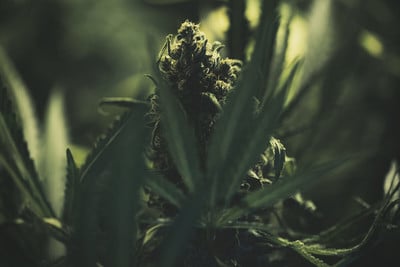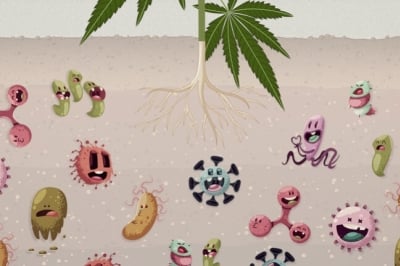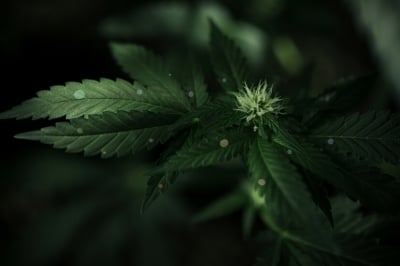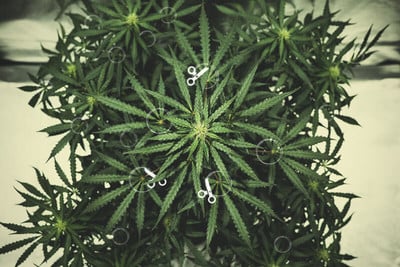.

How Sugar Plays A Major Role In Growing Cannabis
In order to increase the number of buds you harvest, it's important to ensure your cannabis plant has enough sugar. Let's take a look at why sugar is so essential to the growth process, and how the cultivator can boost sugar production with various methods.
Contents:
Growing cannabis isn’t a walk in a park. At least growing great cannabis isn’t. You need to know a lot of things to optimise the health and yield of your plant. One piece of information that is important to consider is the sugar level of your plant. This might seem like a strange variable, but it’s actually one of the biggest factors affecting cannabis growth, ultimately dictating the weight of your harvest. If a plant produces enough sugar and distributes it to the right places around its structure, you can expect a haul of fat buds.
Thus, it’s essential for growers to know how sugar is distributed around your plant, as well as how you, the grower, can boost sugar development.
NO SUGAR, NO CANNABIS
We’ve all heard of photosynthesis. Photosynthesis is a natural process through which most plants are able to transform solar energy into oxygen (O₂) and glucose (sugar).
There are a variety of ways to enhance this process and encourage greater sugar production. But it’s not just about adding supplements; sugars must reach the right places throughout the plant, with some areas requiring more than others.
The principle behind sugar distribution is called “sink strength” where sugar flows or “sinks” through its different organs. However, the speed of the flow varies, and the buds are the ones that need and receive most of the sugar.

Also, younger foliage requires more sugar because it is still growing. Meanwhile, the older and mature leaves need less. The unabsorbed sugar doesn’t go to waste though, as it is transferred to the young leaves.
This might sound like a straightforward process, but it really is quite complex. In fact, there’s a lot of competition going on as every part of the plant pulls whatever sugar they can get. The harder the pull, the more sugar goes into it. This means that the organs with stronger suction get more sugar.
We can calculate how efficiently sunlight is being converted to sugar by measuring carbohydrates (simple sugars) contained within the sap of cannabis leaves. The process may sound complicated, however, with a brief overview of brix levels and a cheap, straightforward instrument, novice and experienced cultivators can unlock invaluable growing prowess.

CALCULATING SUGAR USING BRIX LEVELS
Brix is a scientific term used to measure the amount of light that changes direction when passing through any liquid or solid. Place any object into water and it appears to bend. In reality, the light outside the water travels at a higher speed than the light within the water. The difference in density of the two substances is what results in the optical illusion. By measuring the angle at which light travels through sap, it is possible to calculate the degree of refraction taking place. The brix level obtained via the use of a refractometer will give growers an indication of the sugar density of sap, and thus the strength of the plant.
Remember, higher sugar content means fatter buds, and a greater brix percentage is indicative of this. Although other compounds within sap will alter the angle at which light refracts, sugar—or in this case carbohydrates—is one of the largest molecules, and as a result, its effect on light is stronger than other, smaller molecules.
A REFRACTOMETER: AN ESSENTIAL TOOL
Thankfully, handheld refractometers are inexpensive and simple to use, a win-win for cannabis growers, no matter their budget or experience. Start by applying some distilled water to your refractometer; a reading of 0% brix will ensure it is properly calibrated. By opting for a digital refractometer, the process becomes even more straightforward. Once you are happy the device has been sufficiently tuned, place a few drops of sap squeezed from a rolled cannabis leaf into the well hole and press the switch. The digital display will indicate the brix level.
One final note on calculating brix; temperature can also be a factor in how light behaves when it passes through an object. Most brix meters will automatically factor temperature into their reading, however, as a precaution, make sure any liquids you are trying to read are at room temperature first.
You have a refractometer and have competently calculated the brix level of your cannabis plants, but what is a respectable brix percentage? The target brix level is anything over 12%. This shows that the conversion to sugars being undertaken by your cannabis is not only efficient, but your plant also has a greater resistance to pests and diseases. The higher the brix level you can achieve, the better; anything lower than 12% and your marijuana is lacking any one of the key attributes it needs to survive, such as light, water, nutrients, or sufficient temperature controls. If you do autumn into the category of less than 12% brix and have already undertaken steps to make sure your cannabis is correctly catered to, the following techniques can help improve the production of sugar.

ENCOURAGING SUGAR PRODUCTION
Photosynthesis isn't just about the absorption and efficient use of sunlight. It also takes into consideration a lot of different factors. These include the presence of water, carbon dioxide, and the health of the soil. By optimising these variables, growers can encourage plants to absorb all the essential nutrients necessary to produce more buds.
The good thing is, the sugar distribution process does not require human intervention, although it can certainly benefit from it. There are a vast array of sugar supplements out there claiming to boost the bloom period significantly. Everything from branded products to simple blackstrap molasses can be added to the substrate a few weeks before bloom to ensure widespread and effective sugar distribution.
TRIMMING IMPROVES CANNABIS SUGAR PRODUCTION
It is known that plant architecture manipulation affects the chemical composition of cannabis plants. Specifically, it increases cannabinoid standardisation in "drug-type" medical cannabis. In a similar matter, apical bud removal increases seed yield in hemp.
One of the most common and popular methods of naturally boosting sugar production is leaf trimming. This process, known as defoliation[1], speeds up sugar production by redirecting sugars to parts of the plant that benefit most—the buds. But be sure that you don’t remove the majority of leaves, as this would make the whole process ineffective by stalling photosynthesis.
Some growers simply trim down young foliage as soon as it grows. They assert that it stops plants from using too much energy and helps the buds suck more sugar, although science has yet to back this up.
Remember, leaves are one of the biggest contributors to sugar production. It will help if you spare the top leaves from trimming because they catch the most sunlight.

One more thing about sugar
All plants, including cannabis, don’t directly absorb sugar. Instead, they are the ones that make it. This is done with the help of a series of internal metabolic processes that, when facilitated in the right conditions, leads to greater yields.
It’s all about stimulating the cannabis into metabolising and synthesising more sugars. It’s through this that they become stronger and more resistant to different diseases. And it doesn’t just increase the size and number of buds, but also the flavour and potency.
You can test the sugar levels of your plant by measuring its sap with a refractometer. This helps you know if the cannabis is healthy or if you need to improve its feeding process. Although not essential for every operation, this tool can be effective for those tracking how sugar impacts the growing process.
- Sugar promotes vegetative phase change in Arabidopsis thaliana by repressing the expression of MIR156A and MIR156C - PubMed https://pubmed.ncbi.nlm.nih.gov











































